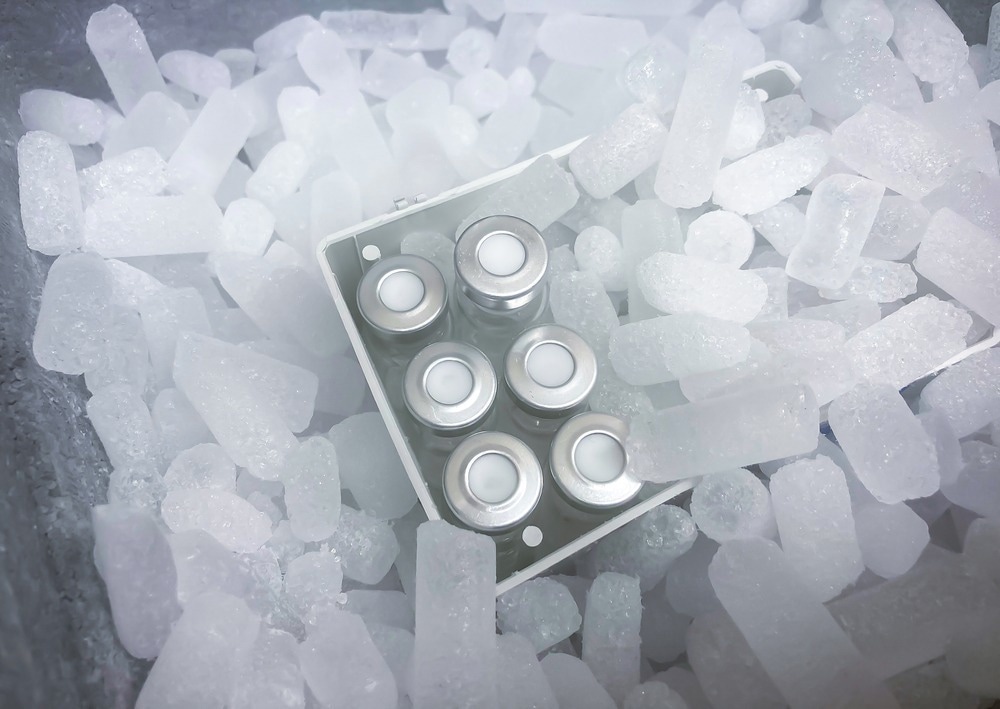CEPI has provided funding to a public research university in Belgium to investigate whether a novel vaccine stabilization method could eliminate the need for mRNA vaccines to be stored in frozen storage and enable a quick and expanded response to future outbreaks in as little as 100 days.
 Image Credit: Elzbieta Krzysztof/Shutterstock.com
Image Credit: Elzbieta Krzysztof/Shutterstock.com
Up to US $1.9 million will be awarded to Ghent University to test the efficacy of optimized mRNA vaccines created on the specialized mRNA Galsomes platform in preclinical models following the vaccines' “spin-freezing.”
A unique substitute for the conventional freeze-drying process, spin-freezing was invented by RheaVita, a Ghent University spin-off company. The Flanders Institute for Biotechnology (VIB) funded the research.
Spin-Freezing: The Next Vaccine-Drying Frontier?
To prevent spoilage, extend shelf life, and improve accessibility to certain products in remote or low-resource environments, freeze-drying involves temporarily dehydrating and storing certain vaccines, diagnostics, therapeutics, and foods as a powder at heat-stable temperatures (as the products no longer require frozen storage).
The novel method known as spin-freezing has the potential to become the method of choice for vaccine manufacturers because it may provide supplementary advantages over the conventional freeze-drying process.
To accomplish spin-freezing, vaccine vials are quickly rotated along an axis while a stream of cold, inert gas solidifies the vaccine into a thin powder layer around the vial's side. This can help increase the quality of vaccines produced by enabling a much faster drying process and giving manufacturers more control.
Additionally, vaccine manufacturers can spin-freeze vaccines continuously, vial by vial, eliminating costly and time-consuming delays and bottlenecks that frequently arise during traditional freeze-drying, in which vaccines are produced in batches.
Although batch manufacturing has long been the norm in the industry, continuous manufacturing, in which raw materials are continuously fed into the production line and collected at the end, may offer increased efficiency and hasten the release of vaccines onto the market. It might also aid in cost savings by lowering labor and waste.
All together, these possible advantages might advance the 100 Days Mission, an initiative led by CEPI and supported by the G7 and G20, which aims to stop an outbreak before it spreads to a pandemic and speed up vaccine development to about 100 days from the time a future virus is discovered.
Innovators are increasingly looking to meet the challenge of rapidly scaling up of thermostable mRNA vaccine doses for wider global delivery and in addition to making mRNA vaccines thermostable, spin-freezing has the potential to flip the usual batch production process utilized by pharmaceutical manufacturers and instead offer continuous manufacturing, which, if successful, could promote fast and flexible mRNA vaccine production in response to future outbreaks.”
Ingrid Kromann, Acting Executive Director, Vaccine Manufacturing and Supply Chain, Coalition for Epidemic Preparedness Innovations
Dr. Ine Lentacker and Professor Thomas De Beer said, “We are currently validating our mRNA vaccine platform, mRNA Galsomes, as a prophylactic vaccine against various infectious diseases. Leveraging the innovative continuous freeze-drying technology and expertise in biomolecule production and analytics at Ghent University, we are excited that this collaboration between Ghent University and CEPI provides us with a great opportunity to improve the thermostability of mRNA Galsomes.”
They further continued, “We believe that our efforts to address challenges posed by cold chain distribution could significantly contribute to equitable access to mRNA vaccines globally.”